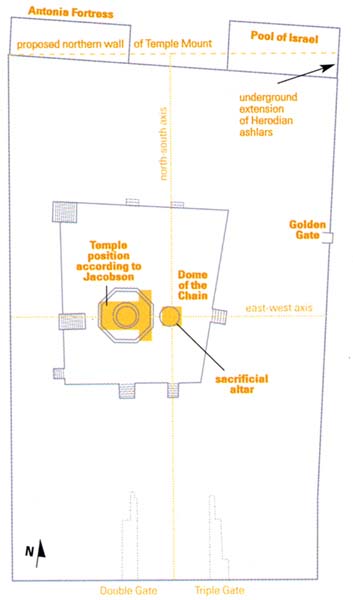Ritmeyer Responds to Jacobson

David Jacobson’s theory regarding the shape of Herod’s Temple Mount and the placement of the Temple within it draws heavily on Roman architectural practice. The Romans were particularly fond of symmetrical structures, as Jacobson rightly points out. But he fails to note that this heavy tilt towards symmetry usually occurred when a structure was first being planned. Could Herod have imposed a symmetrical design on his expanded Temple Mount, which was built on the site of Solomon’s Temple? He would have had to take existing features into account. We must also ask why, if the Jewish Temple complex was indeed planned as a newly built Greek or Roman temple, there are so many flaws in the design (see plan). Why are the walls of the Temple Mount not parallel to each other? Why does Jacobson’s “north-south axis” not divide the northern or southern walls into two identical halves? Why is the Antonia Fortress not parallel with Jacobson’s “proposed northern wall of the Temple Mount”?
These flaws show that the Jerusalem sanctuary was not built as a straightforward Roman building. No, Herod’s Temple Mount was rather an asymmetrical complex, made as large as physically possible.
Already a library member? Log in here.
Institution user? Log in with your IP address.

